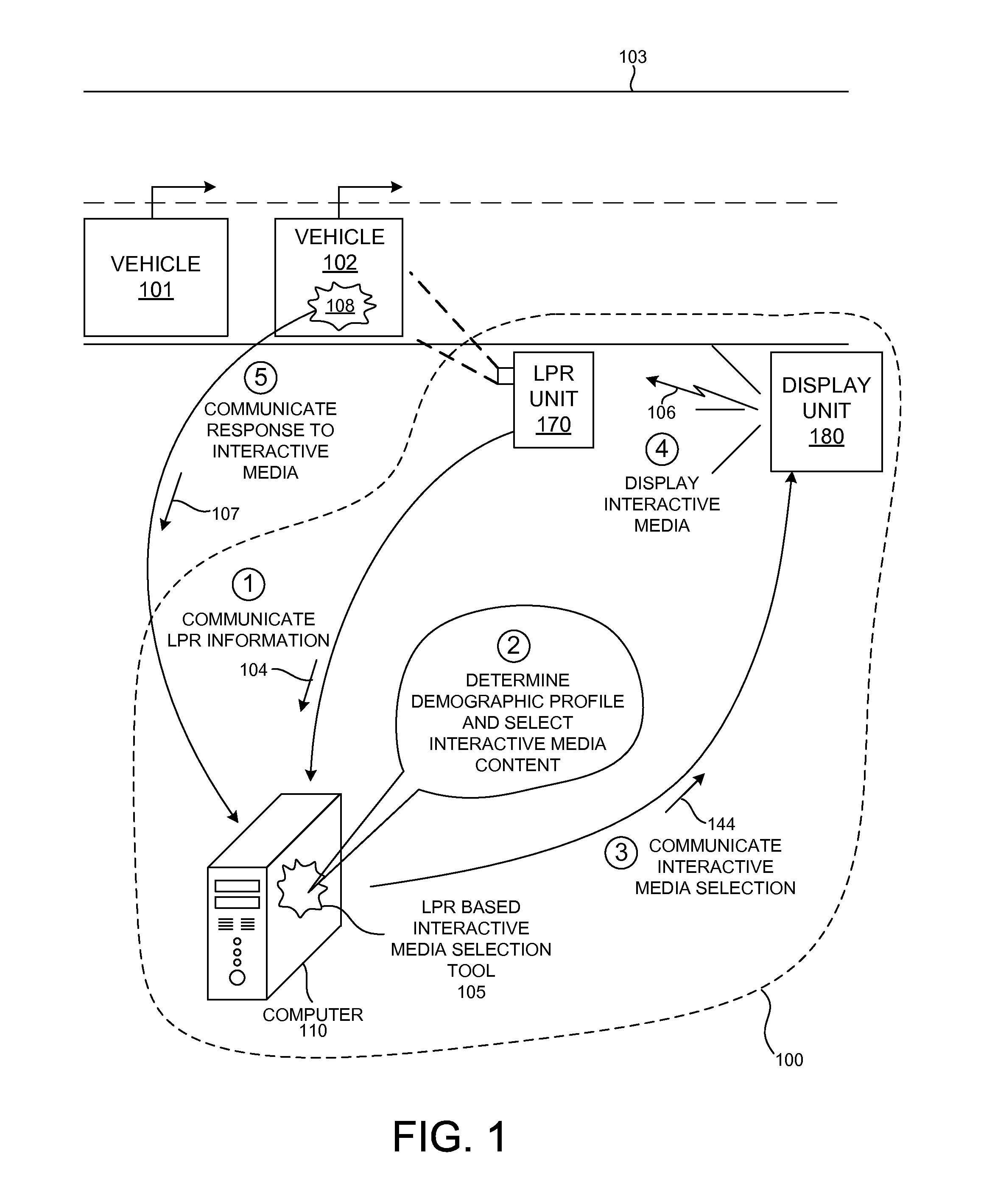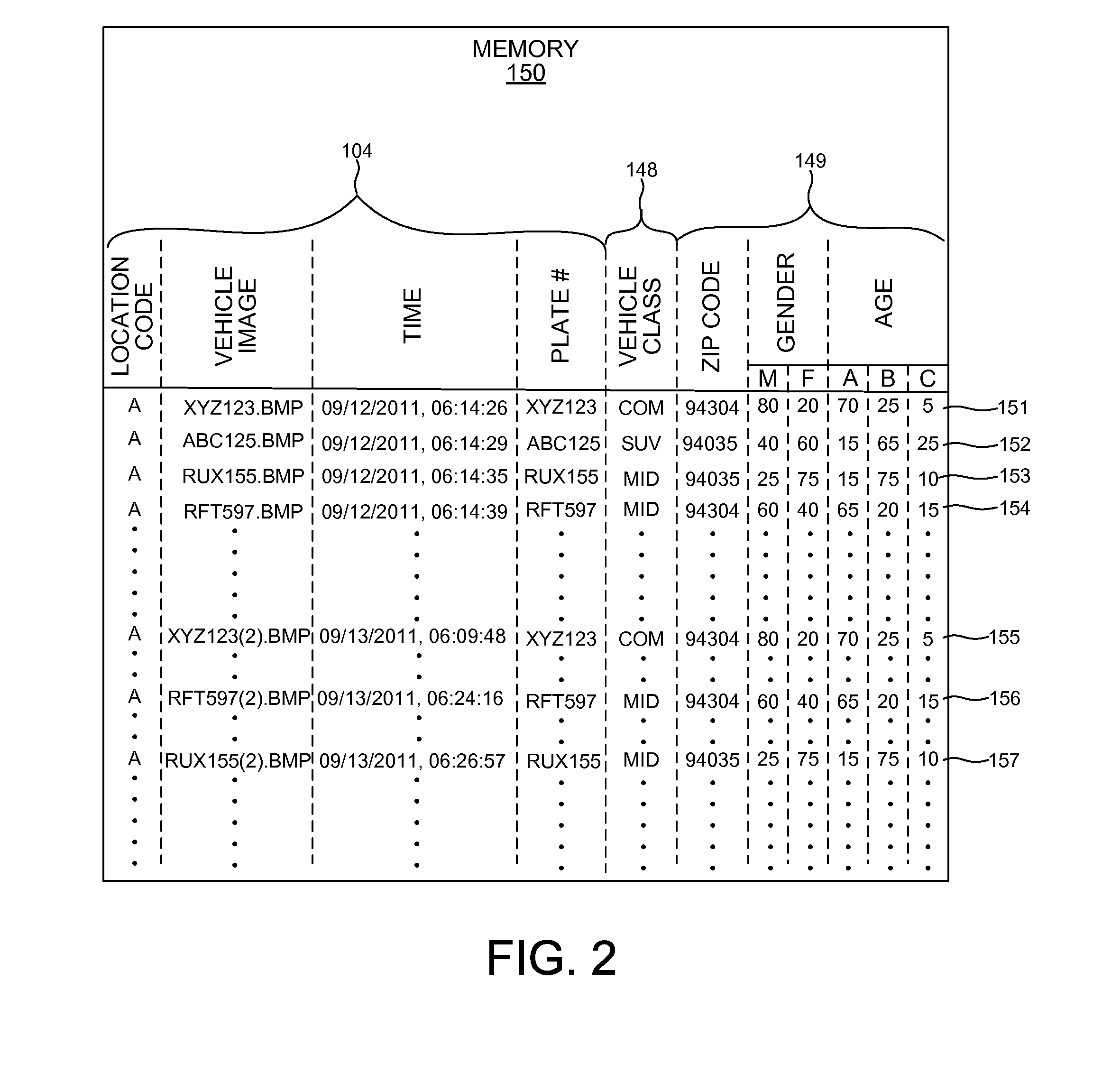Interactive Advertising Based On License Plate Recognition
a technology of interactive advertising and license plates, applied in the field of license plate recognition systems and tools, can solve the problems of limited effectiveness of displayed advertising content, limited effect of display sign advertising, and resistance to capital investment to replace existing signs with more costly signs, so as to achieve the effect of less time to read and more time to read
- Summary
- Abstract
- Description
- Claims
- Application Information
AI Technical Summary
Benefits of technology
Problems solved by technology
Method used
Image
Examples
Embodiment Construction
[0023]Reference will now be made in detail to background examples and some embodiments of the invention, examples of which are illustrated in the accompanying drawings.
[0024]FIG. 1 is a diagram illustrative of an embodiment of LPR based interactive media presentation system 100 in one exemplary operational scenario. LPR based interactive media selection system 100 includes a LPR unit 170, a display unit 180, and a general purpose computer 110 operable to implement LPR based interactive media selection tool 105 and LPR based interactive media messaging module 109. LPR unit 170 and display unit 180 are communicatively coupled to general purpose computer 110. For example, LPR unit 170 and display unit 180 may be communicatively coupled to computer 110 by a wired or wireless communication link. In some embodiments, computer 110 may be collocated with any of LPR unit 170 and display unit 180. For example, in some embodiments, computer 110 may be a digital signal processor on board LPR un...
PUM
 Login to View More
Login to View More Abstract
Description
Claims
Application Information
 Login to View More
Login to View More - R&D
- Intellectual Property
- Life Sciences
- Materials
- Tech Scout
- Unparalleled Data Quality
- Higher Quality Content
- 60% Fewer Hallucinations
Browse by: Latest US Patents, China's latest patents, Technical Efficacy Thesaurus, Application Domain, Technology Topic, Popular Technical Reports.
© 2025 PatSnap. All rights reserved.Legal|Privacy policy|Modern Slavery Act Transparency Statement|Sitemap|About US| Contact US: help@patsnap.com



